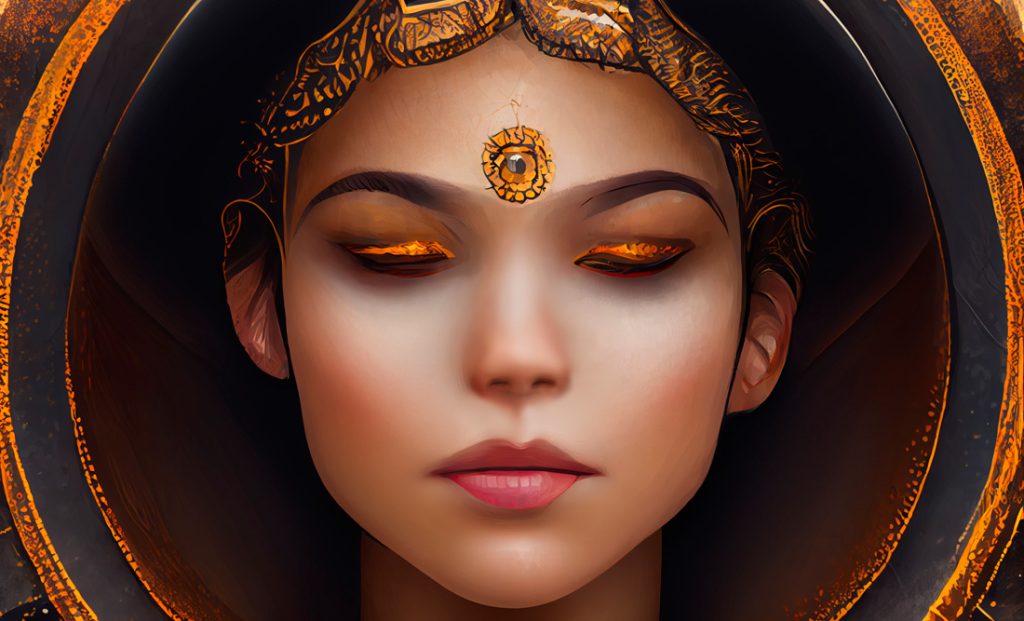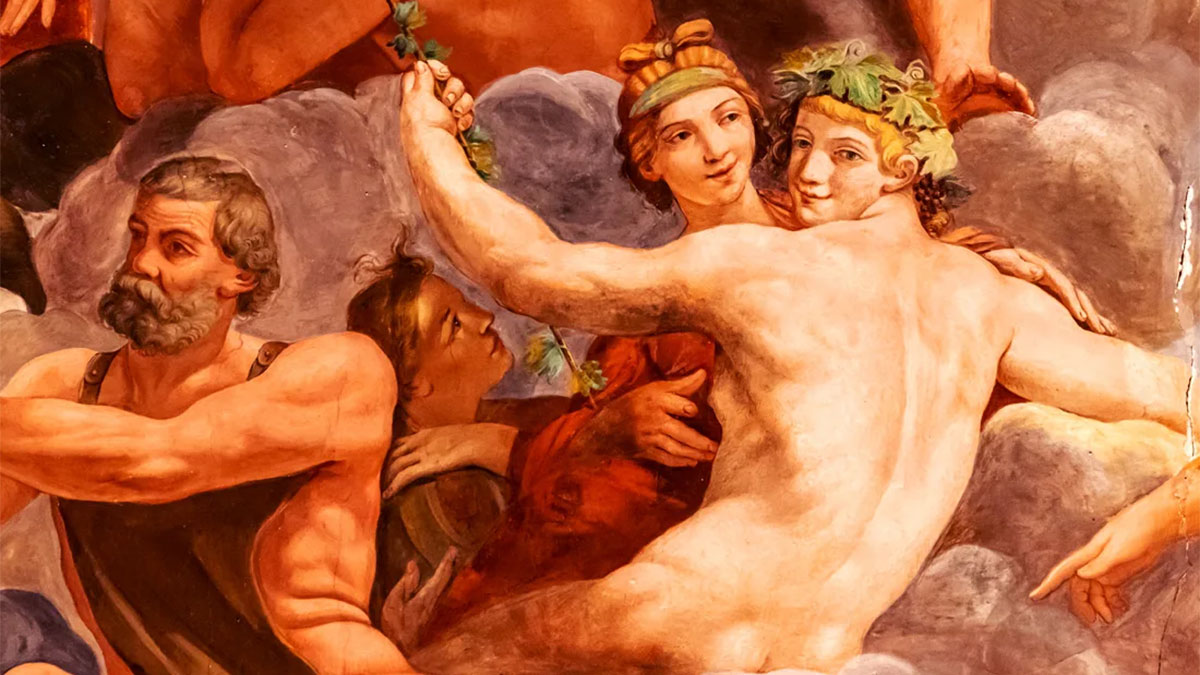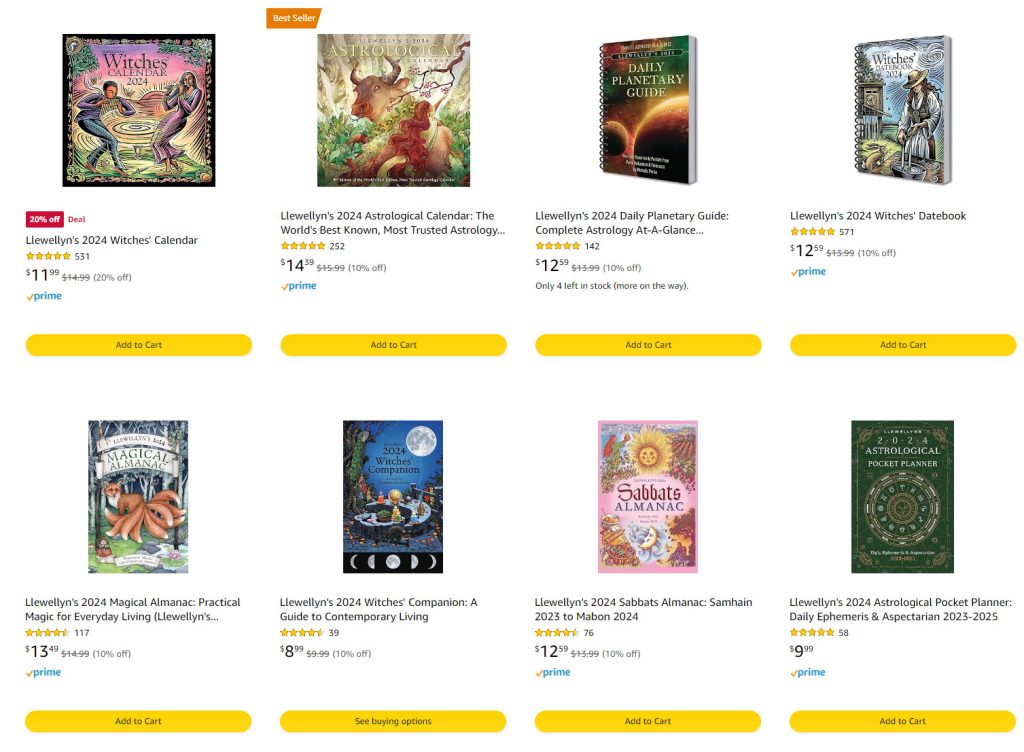Last Updated on December 1, 2025 by Avia
I love the history of Saturnalia. It represents a raucous, wild time of celebrating a special time of year. It’s symbolism is steeped in railing against the dwindling light, celebrating the good things going on in life, and establishing hope for the days ahead. Sounds awesome, right? But what is Saturnalia? Read on about this holiday, its meaning, and how to celebrate anciently by embracing old-school Saturnalia.
Table of Contents
Some Background About Saturnalia

Saturnalia was a Roman festival that honored the god Saturn. It was originally a one-day event, but eventually expanded to a week-long celebration. The festival was distinguished by gift-giving, feasting, and merrymaking. It was also a time when traditional social roles were reversed, and slaves and masters would swap places (kind of like Boxing Day). And if you dive deeply into the history books, you’ll discover this week-long festival was celebrated in the old days with lots of drink, food, and making whoopee. What can I say? The Romans knew how to throw one humdinger of a party.
In recent years, Saturnalia has been gaining popularity as a Pagan holiday. Many Pagans see it as a time to celebrate the change of seasons and the coming of winter. Others use it as a time to honor ancestors and departed loved ones. Whatever your reason for celebrating, Saturnalia is a wonderful time to come together with friends and family to enjoy some holiday cheer.
Other Details About Saturnalia
Saturnalia is an ancient Roman festival in honor of the god Saturn, which was held on December 17 of the Julian calendar. As the popularity of the festival grew, it was later expanded into a week-long celebration. The holiday was a time of feasting and revelry, and gifts were exchanged between friends and family. The festival also included public displays of affection, such as kissing under mistletoe.
When is Saturnalia?
Saturnalia was an ancient Roman festival that was celebrated from December 17th to 23rd. It was a time when people would exchange gifts, enjoy feasts, and partake in other revelries. The holiday was also a time to honor the god Saturn, who was believed to have brought agricultural plenty.
History of Saturnalia
The Roman festival of Saturnalia was a time of revelry and reversal of roles. It was observed from December 17th to 23rd and honored the god Saturn. During this time, businesses would close, slaves would be given a day off, and people would exchange gifts. The holiday also included feasting, drinking, and singing. This festive time was a popular opportunity for parties and other social gatherings.
Symbols of Saturnalia

The Saturnalia was an ancient Roman festival in honor of the god Saturn. The holiday was celebrated from December 17th to 23rd and was a time of feasting, gift-giving, and revelry. The festival was so popular that the early Christians eventually adopted it as a way to celebrate the birth of the Christ child.
One of the most recognizable symbols of Saturnalia is the figure of Saturn, who is often depicted holding a sickle or scythe. This symbolizes the god’s role as the bringer of death and destruction.
Other symbols associated with Saturnalia include laurel wreaths (a symbol of victory), which were sometimes quite ornated and dipped in a metallic substance to create a sheen, and then worn by party-goers during the festival.
Candles (a symbol of light) were also a symbol of the feast and festival, as they represented light in the midst of the dark solstice in Roman times.
Gifts ornately wrapped were considered symbols of community and generosity during the rambunctious and often bawdy festival of Saturnalia.
Wine was also flowing, so items associated with grapes and fermentation – vessels such as the amphora could also be considered symbols of Saturnalia. Other fermented beverages served as alcoholic libations during this rambunctious time of year for the ancient Romans.
Gods and Goddesses of Saturnalia

Although the holiday of Saturnalia has its roots in ancient Rome, it has been adapted and celebrated by many cultures throughout the centuries. One common element of Saturnalia is the honoring of various gods and goddesses.
In ancient Rome, Saturnalia was a time to honor the god Saturn. As the god of agriculture, he was believed to bring good harvests and fertility. In addition to honoring Saturn, people also paid tribute to Juno, the queen of the gods. Juno was the goddess of childbirth, marriage, and nurturing. She was an important figure for families celebrating during Saturnalia.
Other cultures have their own deities that they honor during this time of year. In Mexico, for example, participants often pay homage to the Aztec god Huitzilopochtli. He was the god of war and sacrifice, as well as the patron deity of Mexico City. Other popular figures include Demeter, the Greek goddess of harvest; Freya, the Norse goddess of love; and Osiris, the Egyptian god of rebirth.
No matter which gods and goddesses are worshipped during this time – it is definitely a lovely reminder that we are all connected by our humanity. By honoring those who came before us and celebrating our differences, we can create a more inclusive world for everyone.
Ways to Celebrate Saturnalia
There are many ways to celebrate Saturnalia. One way is to decorate your home with greenery and lights, as this was said to please the ancient gods. Another way is to give gifts to your friends and family, as this was a tradition during the festival. You could also feast on traditional Saturnalian foods like a roasted pig or honey cakes. Finally, you could take part in some of the typical festivities that took place during Saturnalia, such as singing and dancing.
Frequently Asked Questions About Saturnalia
Saturnalia is an ancient Roman festival which was originally celebrated in honor of the god Saturn. The festival was later absorbed into the Christmas celebration.
Saturnalia was originally celebrated on December 17th, but the date was later moved to December 25th.
The most common tradition associated with Saturnalia is the giving of gifts. Other traditions include decorating homes and businesses with greenery, feasting, and singing.
Final Thoughts About Celebrating Saturnalia
In closing, this is a bright and ancient Roman festival that was originally celebrated in honor of the god Saturn. The holiday eventually evolved into a more general celebration of the winter solstice, and many of its traditions live on in modern Christmas celebrations.
Although the original rites and rituals of this festival might be long gone, its spirit lives on in the way we celebrate Christmas today. Many of our modern Christmas traditions can be traced back to the age-old holiday, including gift-giving, feasting, and decking the halls with jolly holly and such.
So when you’re celebrating Christmas this year, remember some of the ancient origins of this time of year. Maybe you can even adopt some new ceremonies or incorporate your own traditions with this holiday. If nothing else, this ancient occasion is a great opportunity to take a moment to ponder the symbolism and history behind Saturnalia. As always, thanks for reading & happy Saturnalia to you and yours!
Mighty brightly,

© Copyrighted. All Rights Reserved.













